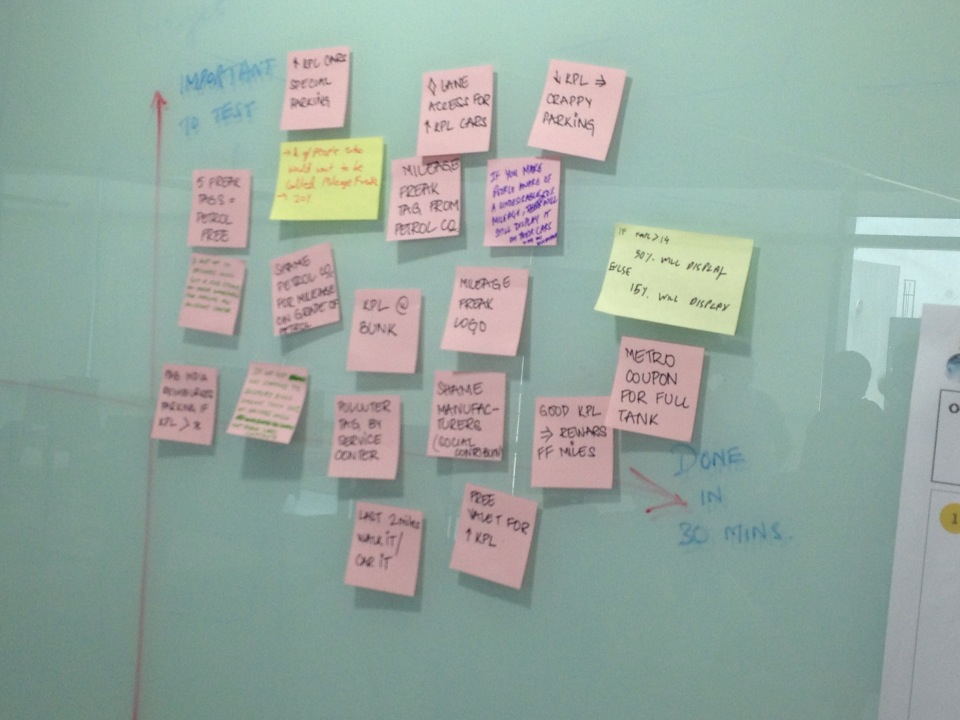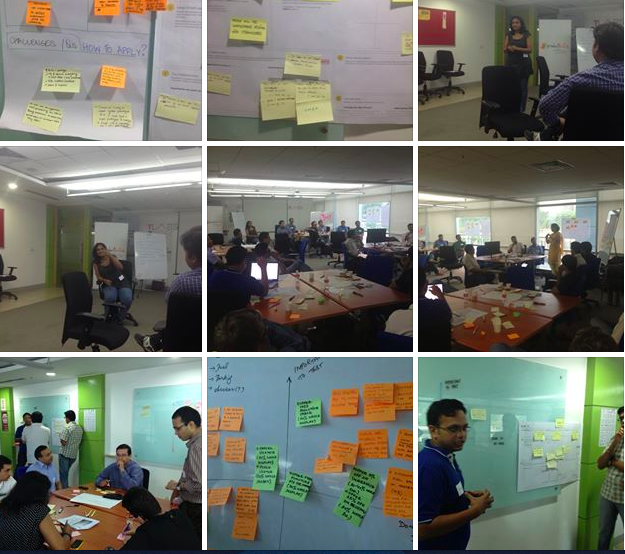Creating intuitive products used to be enough but not any more. Now customers demand awesome product experiences…the ones that they tell others about. ‘Design awesome’ – we use these words a lot, but what does it mean? And how do you go about it?
It’s not about delivering awesome products; it’s about delivering awesome experiences that deliver unexpected delight. Design for Delight is grounded in deep customer empathy, going broad with ideas then narrowing with possible solutions and finally, rapid experimentation with customers. In my earlier article on creating awesome by design, I wrote about the first of three important principles.
- Know your customer
- Go broad to go narrow
- Iterate with customers, frequently
In this post, I’ll focus on the second principle: go broad to narrow
The first step in design thinking is to understand your customers, identify their pain points and being really specific about the pain point. It’s when you fall in love with the problem and not the solution that a new sense of objectivity comes in.
Start with all the pain points you see your customers face. Don’t stop with the first one you see, observe all the pain points. Go broad and identify them all. Then, you narrow down to the pain point that you feel customers really struggle with. The one that you know you can solve well and in a way that you can build durable competitive advantage… one that others will not be able to copy easily.
Try this… Give your teams 2-5 minutes to write down their ideas for the problem identified, one idea per post-it. Ask them to read it all out and group them on the board. After you go through them all, throw away all the ideas on the board. You will see everyone’s surprise. If it took a team of folks 2 minutes to come up with the idea, don’t you think others outside your company will do it just as easily? Now, ask them to build on earlier ideas or come up with new ones by combining the earlier ideas.
Go Broad
Our first solutions are often our most obvious ones. In fact most brainstorming techniques I use involve throwing away the initial ideas to get to the good ones that will come later. The ones that come later build on earlier ones and tend to be more thoughtful. It is as if we need to flush out the basic solutions before we get to the better and significant ones.
As human beings we are genetically predisposed to solving problems. We often jump into the first solution we get and then, fall in love with it. You will be far more successful in delivering awesome if you fall in love with the problem and not the solution.
Often, you will have to help teams suspend their judgment and think beyond what is accepted as possible. We call this fodder. Give your teams ideas and analogies they can draw from and discover truly disruptive solutions for solving the customer pain point on hand. For example, when we were thinking about mediums of communication for our product to engage the customers, we thought of Morse codes, pigeons, personal messages, and even telepathy!
One good tip would be to ask yourself “what else did we/I look at”, every time you review a solution. Most teams I have worked with only detail out one idea. My magic number is three. I think it is important to explore 3 great solutions (at the very least) and then narrow down to the winning solution. My only rule is that these 3 solutions need to be distinctively different and not just small deviations of each other. If you are having difficulty going broad use this simple 7-to-1 tool.
“To have a good idea, you must first have lots of ideas.” – Linus Pauling
Narrow
Once you have a number of ideas on the board, the next step is to evaluate them and narrow the focus. Narrow down to the handful of ideas that you think you can really solve well with durable competitive advantage.
When you brainstorm, you come up with unique and bizarre ideas from a variety of perspectives, each of them with its own spin and inspiration for the solution. It is easy to discard those but wait, those are probably your most disruptive ideas!
There are several ways to narrow; I will share two ways that I tend to use:
- 2×2 Narrowing Technique: Use this method when trying to narrow across several dimensions that are important to you and your customers
- Label the axis with criteria that lead to some tension and/or criteria that you would like your ideas to have. Place your ideas written on post-its into the relevant quadrant. The ones that you are interested are often in the top, right quadrant. You can decide that you want to look at multiple criteria and go through several rounds of these 2X2s. You may also decide that you don’t have enough ideas that are say, innovative and look to build on existing ideas so that it will be innovative.
- Target exercise: Put all your ideas on the target. The idea that solves the pain point best (with your individual or teams’ judgment) in the middle. This is a great exercise for you to involve your (potential) customers and ask them what idea they would think solves their pain point best i.e. what they would use. The discussion to have needs to be around how you can build on many ideas and combine them into one so you can bring it into the center circle.
A great example from my awesome journey at Intuit is Fasal. The pain-point that farmers in India faced was not knowing how to get the best price for their produce, nor what markets to go to and when. We conducted several experiments on providing the right information at the right time to the farmers, ranging from eBay-like market places to voice-based systems and text messages for providing market information. The magic number is 3… I always try at least 3 different solutions. Interestingly the solution we then built out is not 1 of the 3 but a new concept that had a few attributes of the 3 ideas we shared with customers. Simplicity and accessibility were very important criteria, and these narrowed our solution to an SMS based platform that provides farmers with reliable and real time wholesale market price.
Use go broad to narrow throughout your innovation process, starting with the pain point and ending in the actual building of the solution and support.
I hope this article was insightful to you on how to design awesome using the principle of going broad to narrow. Please feel free to share your thoughts and I would love to answer any questions on this topic.







